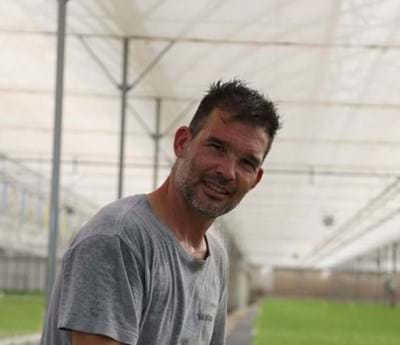Here’s an 11-point list of what happens when the pendulum swings from too bright to too dark in a greenhouse. Growers know that successful production is a matter of the right amount of inputs, but what’s less well-understood is that so many of these depend on achieving the right balance of light to start with.
Taken from our guide "The magic of getting light balance just right", this list is a summary of the impacts of too little, and too much. If you'd like to learn more, we flesh out each point in the free download.
Too much light
- Poor root development
Overheating of the plant cells leads to hydric stress, resulting in poor root development.
- Reduced photosynthesis
Each side of the appropriate light intensity, energy is diverted from photosynthesis to maintenance functions such as cooling.
- Leaf discoloration
A deficit in photosynthesis, root growth and nutrients will increase the risk of leaf discoloration.
- Burning
Direct light landing on the top of the canopy creates a risk that these leaves will burn.
With fixed shading, you have no control over the amount of light. On cloudy days you might miss the light that is available, while on sunny days you need more shading.
— Francisco José López, Saliplant

- Flower abortion
When the plant must prioritize evaporative cooling, it will divert both water and nutrients from building flowers and fruit.
- Uses water to cool not grow
When plant temperature is high over an extended period, water is simply diverted from vegetables, fruits and flower buds.
Too little light
- Smaller plants
Under low light conditions, it is the new growth of the plant that ceases to receive inputs
- Lower production
Direct light making a zone warm, or uneven paint creating cold, create uneven and low production
- Lacks energy to mobilize nutrients
Moving specific nutrients, such as calcium, require disproportionate amounts of energy (think light)

You want to create the best-looking crop, not just for the aesthetics but also because it shows your plants are healthy
— Francisco (Paco) Usero, Climate Consultant, at Svensson in Spain
- Fruit structure problems
Calcium failing to reach, for example, a tomato can lead to blossom end rot and other structural failures
- New growth is nutrient-deficient
The whole plant formation is compromised under light-deficient conditions
Conclusion
Over the years, through multiple studies and experiments, we've found that there are surprising benefits (literally, sometimes so impressive we had to go double check the numbers) to getting light balance right.
It turns out that using screens can make even more light available to your crops, compared to traditional methods. How can putting up a screen increase useful light to the canopy, you may well ask? And why does the possibility of removing shade at dawn and dusk add up to 30% more total light to the crop?
For an in-depth discussion, read the Svensson guide The magic of getting light balance just right
